Accurate and Easy Volume Measurement
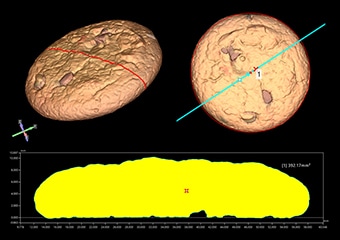
In addition to length, area, angle, and weight, objects also have volume, which represents the amount of space occupied by the three-dimensional object. Volume is commonly used for liquids, gases, and solids. There are many aspects of daily life that are based on volume. However, whereas length can be measured directly using a ruler or calipers, and area can be calculated based on the length of each side, accurately measuring volume is incredibly difficult. In addition to the basics of volume measurement, this page introduces conventional volume measurement methods and problems with those methods as well as the latest methods for measuring volume using a CMM.
- Basic Volume Knowledge
- Conventional Measurement Methods
- Problems with Volume Measurement
- Solutions Using a Non-contact VL Series 3D Scanner CMM
Basic Volume Knowledge
Volume represents the amount of space a three-dimensional object occupies. The International System of Units (SI) unit of measure is the cubic meter (m3). Mathematically, volume can be obtained by integrating the defining functions of a subset (figure dimensions). However, volume is not generally obtained through integration but from actual measurement using dedicated measuring instruments. Such instruments and equipment that measure volume are known collectively as “volume meters”. While measuring volume using Archimedes’ principle may seem simple, accurate measurements take time and effort to control the temperature of the liquid and to remove any air bubbles in the liquid or water droplets on the target.
Formula for calculating volume
Depending on the shape of the object, the volume can be obtained using one of the following formulas. Note that these formulas are limited to cubes, rectangular prisms, cylinders/prisms, spheres, regular polyhedrons, and other set shapes. The formulas cannot be used to find the volume of complicated shapes. Because of this, these formulas are rarely used in practice. They should, however, be remembered as part of the basic knowledge of volume measurements.
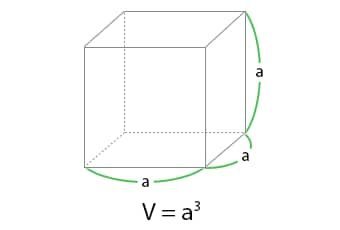
- V = Volume
- a = Length of one side
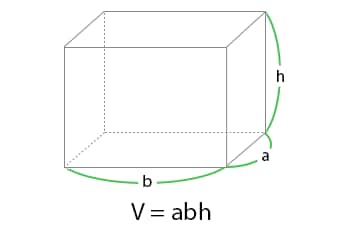
- V = Volume
- a = Vertical length
- b = Horizontal length
- h = Height
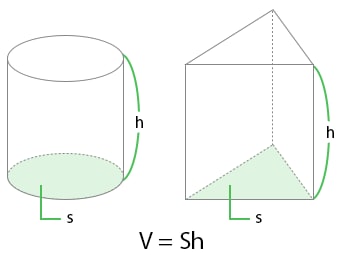
- V = Volume
- S = Area of bottom surface
- h = Height
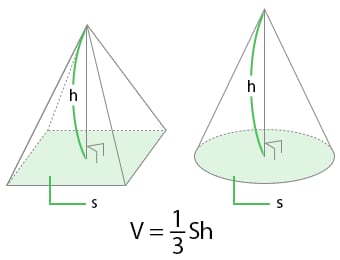
- V = Volume
- S = Area of bottom surface
- h = Height
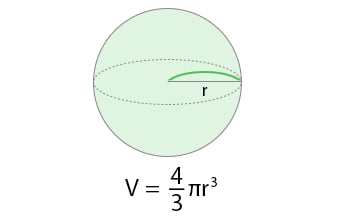
- V = Volume
- r = Radius
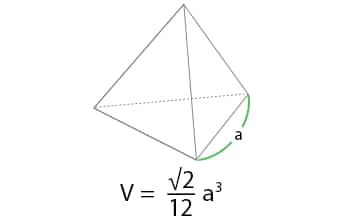
- V = Volume
- a = Length of one side
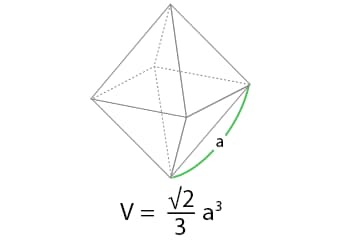
- V = Volume
- a = Length of one side
What is a volume meter?

Volume meter is a generic term for any instrument or equipment that measures the volume of a gas, liquid, or other object. Also known as volumeters, these include flasks, graduated cylinders, pipettes, and burettes commonly used in chemical experiments and medical applications.
Conventional Measurement Methods
The three most common methods for measuring volume are as follows:
- Measurement using Archimedes’ principle
- Measurement using a laser volumeter
- Measurement using an acoustic volumeter
This section explains the basic principles of measuring volume using Archimedes’ principle and the seed displacement method (considered part of the Archimedes’ principle) in addition to measuring volume using a laser volumeter as well as the advantages and disadvantages of each method.
Measuring volume using Archimedes’ principle
Archimedes’ principle is a law of physics that states that the upward buoyancy force exerted on an object immersed in a liquid is equal to the weight of the liquid being displaced by the object. In addition to describing the principle of buoyancy, this law is the basis for volume measurements as the amount of liquid being displaced is the same as that of the object being immersed.
Everyone has experienced getting into a bath and seeing the water rise by the same volume as your body. This is the basis of Archimedes’ principle. First discovered by Archimedes in ancient Greece more than 2,200 years ago, this principle is still used today as a precise method for measuring volume. A typical example is submerging the measurement target in a liquid (usually water) in a graduated cylinder and determining the volume by noting the change in the surface of the liquid.
However, because this method requires the measurement target to be fully submerged in the liquid, it cannot be used for materials that absorb liquid, such as sponges, or for food products with high hygiene requirements. Moreover, even though measuring volume using Archimedes’ principle seems simple, accurate measurements take time and effort to control the temperature of the liquid and to remove any air bubbles in the liquid or water droplets on the target.

- A = Buoyancy
- B = Weight of displaced liquid
- Advantages
- Accurate volume measurement with simple equipment
- Disadvantages
- Requires the use of liquid, so measurement targets will get wet
- Managing the liquid and measurement targets take time and effort
Seed displacement method
The seed displacement method is often used for measuring the volume of bread, confectionery, and other food products. When measuring the volume of food products such as bread and confectionery, the products cannot be immersed in liquid. In cases like this, volume measurement is performed using small seeds instead of liquid. Besides the seed displacement method, the bead displacement method is also used to measure volume using beads as a type of pseudo-liquid. The sand displacement method using sand instead of liquid is also sometimes used to measure the volume inside large structures such as dams and tunnels.

- Advantages
- Liquid-free, eliminating the need to worry about targets getting wet
- Same accuracy as measuring volume using liquid
- Disadvantages
- Soft measurement targets may become crushed, leading to measurement errors
- Inability to measure targets with oil, cream, or other surface adherents
- Prone to errors due to the measurement environment and person performing measurement
Measuring volume using a laser volumeter
Although Archimedes’ principle can be used for high-accuracy volume measurement, immersing the measurement target in liquid means the target must get wet, so it may not be suitable for all targets. A laser volumeter can be used instead for such targets. Laser volumeters use a laser beam to detect the distance to the target to scan its shape, allowing for fast, non-contact volume measurement. In addition to being fast and non-contact, measurement results can be displayed in both 2D and 3D, and the shape can be quantified using actual measurements.

- Advantages
- Volume measurements without the need for liquid, so targets don’t get wet
- Non-contact measurement for use even with soft targets
- 2D and 3D data with quantification of shapes
- Disadvantages
- Errors will arise for places where the laser beam cannot reach
- Inaccurate measurements due to the laser beam not reaching the back or inside of a target
- Not suitable for measuring some complicated shapes
Problems with Volume Measurement
Because of the various methods available for measuring volume, the best method will need to be determined for each measurement target to ensure accurate results. The most common problems include targets needing to be immersed in liquid when using Archimedes’ principle, deformation caused by weight when using the seed displacement method, and incomplete laser beam coverage when using a laser volumeter.
Solutions Using a Non-contact VL Series 3D Scanner CMM

KEYENCE’s VL Series 3D Scanner CMM makes it possible to measure the volume of a wide variety of targets with just one device, which has proven difficult with conventional methods. With the VL Series, targets can be measured without having to be immersed in liquid, so there’s no need to worry about the targets getting wet. Also, because non-contact measurement is performed with a large, high-definition CMOS camera, deformation is no longer a concern even with soft materials, and target shapes are accurately scanned in 3D to ensure high-accuracy, high-speed volume measurement.
There is also no need to worry about being limited by the range of the laser, as with laser volumeters. The VL Series offers 360-degree scanning in every direction, making it possible to measure even the back of shapes. Targets are illuminated by two light sources and rotated 360 degrees for instantaneous acquisition of shape date from millions of points. This ensures accurate measurement even with free-form surfaces in addition to wall thicknesses and vertical wall surfaces, which are not easily measurable with conventional devices.

With no need for initial configuration of settings and pre-adjustment of target installation, volume measurement can be performed simply by placing the target on the stage and pressing a button to begin measurement. Acquired data is all digital, so not only is management easy, but analysis is also efficient with the ability to take GD&T measurements directly from the acquired data.
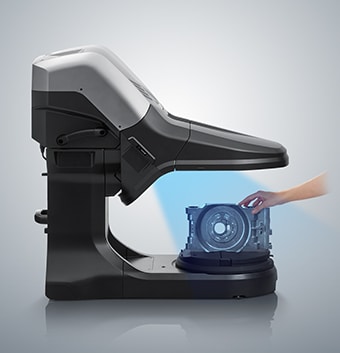
Feel free to consult KEYENCE with any questions or concerns about volume measurement. KEYENCE’s wide range of products—including the VL Series 3D Scanner CMM—make it easy to find solutions to various problems. Click the following link to download the VL Series catalog free of charge.


